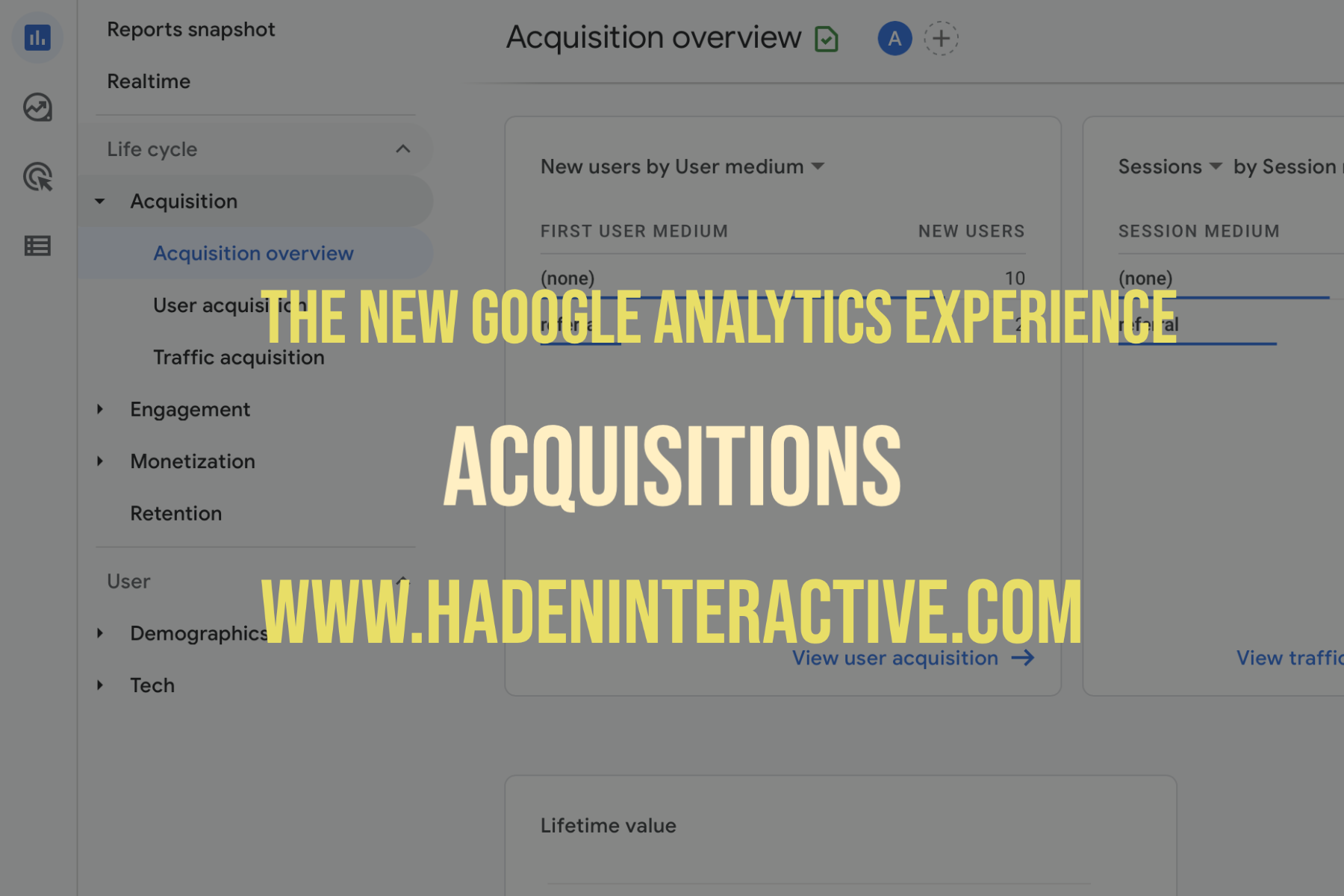Your cart is currently empty!

The New GA: Acquisition
The new Google Analytics interface, G4, has a whole new set of Acquisition reports.
Acquisition is all about where your website’s traffic comes from. This report shows how many of your visitors find you through Organic Search, how many are referred by links from other websites, what proportion find you through social media, how many come directly by typing in your web address, and what kind of traffic comes from Google ads or email marketing.
This set of reports helps you see what’s working and what needs work, when it comes to bringing visitors to your website.
Here’s a reminder of the Google Universal Analytics Acquisition Overview report, showing a week of data from our lab site:

Starting at top left, we see the channels that bring us traffic, a line graph showing how our users drop over the weekend and peak Monday, no e-commerce sales, and then in the second row details about the different sources of traffic, including engagement.
We can click through to see more details about the different traffic sources, including the web pages that sent referrals, details of social media, and more.
This report shows that organic search brings most of our traffic. As an SEO experiment, the lab site is doing well. However, we could certainly get more out of social media and referrals.
The new Acquisitions Overview
Here’s the GA4 Acquisitions Overview report, top row:

This also shows our lab site. We can see that most of the visitors have come from Organic Search and that the 13 who have visited in the last half hour came mostly from the United States. We see the line graph, as in the classic view.
We can scroll down and see more information, and we can choose what to feature on the dashboard.
Traffic Acquisition and User Acquisition
If we look down on the left-hand side, we can access the Traffic Acquisition and User Acquisition reports.

Traffic Acquisition shows us details of the sources of traffic, with line graphs and bar graphs. We can see engagement, conversions, and events for all the sources. We can easily compare, for example, the average engagement rate for Facebook visitors with the average engagement rate for visitors referred by Wikipedia. We can easily see which source of traffic sends us the people who shop or fill out a form.

User Acquisition shows us new and returning users and their levels of engagement, including events, conversions, and revenue. It focuses on the way visitors found us for the first time.
A close examination of the two charts shows that these two reports, for this particular site, are just about identical. That’s pretty much true for all the sites we’ve checked. If you have a preponderance of new visitors, there may not be a very visible difference in your charts.

Below the snapshot charts are areas where we can search for more specific data using tools which appear upon hover. In the screenshot above, we’re looking at all the visits from Pinterest in the past month — or at least the first 7 rows in alphabetical oder.
You get the most from the new Acquisitions report if you go in with specific questions.
We can easily toggle between the Traffic Acquisition and User Acquisition reports at any time using the menu in the lefthand sidebar.
Ecommerce data
Ecommerce data is available in both the classic and the G4 interface if you keep track of it. While our lab site is not really an ecommerce site, we do have a few products for sale there, so we can collect the e-commerce data. We don’t see enough there to have useful data to show you, but GA4 shows us the zeros more frequently than Universal Analytics did.
At first glance, the new interface seems to highlight transactions a bit more than the classic view. However, the same information is available in both views.
Do you like to have lots of information to delve into, or do you find it distracting to have all that data? The new interface could be a better experience if you’re mostly a “show me the money” user of the Acquisitions report. However, you can delve into more data when you want to do so.
by
Tags:

Leave a Reply